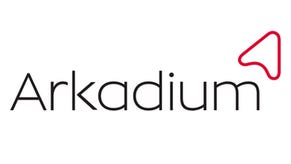Kipman: Kinect CPU use down to single-digits
Microsoft's director of incubation says all Xbox 360 games still leave a significant amount of processing power on the table
Alex Kipman, director of incubation at Microsoft and the brains behind Kinect, has told GamesIndustry.biz that the new motion control tech now only uses a single-digit percentage of the Xbox 360's processing power, down from the previously stated ten to 15 per cent.
Speaking in an interview published today, Kipman said that although the sensor bar impinges on system resources more than was originally planned, it shouldn't affect the ambitions of developers, as even the most demanding of games still leave plenty of 360 processing power to be taken advantage of.
"The answer is, as much as we like to talk about bits and percentages, you take a game like, I don't know, Call of Duty: Black Ops - there's a significant amount of processing, be it CPU or GPU, that still remains on the table," Kipman said.
"So after that, when we came to this revelation about games, and future games that would be coming to Xbox, we looked at it and we said - 'is it worth the trade-off to put on-board processing on the device when we think we can create magical, unique, deep, thorough experiences without it?'"
Originally, Kinect was intended to deal with all of its processing internally, thanks to an on-board processor which waslater dropped by Microsoft to keep down costs.
"That figure of 10 or 15 per cent, we're actually in single digits, but the philosophy is correct," said Kipman. "It's a trade-off... That trade off is easy, it's about the affordability of the device. From the perspective of bringing to market this amazing deal, £129.99 with Kinect Adventures, plus sensor - buy one and have your entire family play, it's a very interesting customer value proposition.
"We can create games which are as rich and thorough and as deep as the games which we have on our platform today and which we will have tomorrow. Then the conversation becomes simple: you start moving into a world which says, why keep something complicated when you can make it simple? We decided to have our cake and eat it too."
Kipman clarified that Kinect functions are modular choices, that they can be included or left out according to developer preference, in much the same way as any other technical option.
"What Kinect brings to the table is a new set of paints and paintbrushes, it broadens the palette and allows you to do different things. Not all features are created equal, you can totally imagine a game that's using practically the entire of the Xbox 360 and still uses identity recognition. You can have a game that uses a small vocabulary of voice recognition that will still have pretty much 100 per cent of the processing. And on and on.
"You can shop, in a way, in the platform by menu, and you can choose the paint colours and paintbrushes you have. This is no different than saying, 'what physics engine, what AI engine, what graphics engine' you're going to be using. I can make the same argument that, hey, I'm going to be using Engine X off the shelf, I'm going to be giving up control over the hardware. There's some amount of resources that I give up for the price of the flexibility and the time to market of using a middleware engine."
The first part of our interview with Alex Kipman, where he discusses overcoming human lag, the move away from traditional programming and the idea of "machine learning", can be read here.








.jpg?width=291&height=164&fit=crop&quality=80&format=jpg&auto=webp)